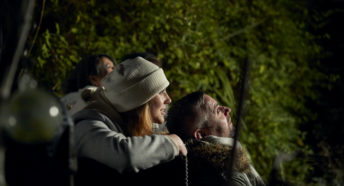Dark Skies Update – June 2024
After all the excitement and magnificent view of the Arora across Yorkshire what has June got to offer?


In June, the night sky highlights include
- The Full Strawberry Moon
- A gathering of Mars, Venus, and a crescent Moon on June 21 that is called the Summer Solstice Social!
- The Arietids Meteor Shower on June 7
- The earliest sunrise of the year on June 14
- June’s New Moon on June 18 welcomes dark skies
- The Summer Solstice & Longest Day on June 21
- Opportunities to spot the brightest planet, Venus, as it approaches maximum brightness for the year (around the Fourth of July). Look west after sunset!
The month of June is noted for strawberries, and this appears in the name of the full moon this month, 22nd.
Seeing the planets:
Many of the planets are in poor observing positions throughout June.
Mars is an improving morning planet rising three hours before sun rise the end of the month.
Jupiter is an improving morning planet.
The Summer Solstice (longest day) occurs on 21st June. This gives us very limited viewing time of a dark sky.
Comet C/2023 A3 Tsuchinshan- ATLAS is now within binocular / small telescope range passing through Virgo and Leo – but because of limited darkness will be hard to see.
Use the big Dipper ? Plough to find these two constellations and observe to see comet.

June presents an ideal time to see Noctilucent Clouds (NLC) These are high altitude ice sheet clouds are formed when super cooled water vapour freezes around tiny particles left behind when meteors vaporise. Best time is 60/90 minutes after sunset low in the NW Horizon or in NE at sunrise.

Keep an eye out for the return of aurora after 10.06.24.







